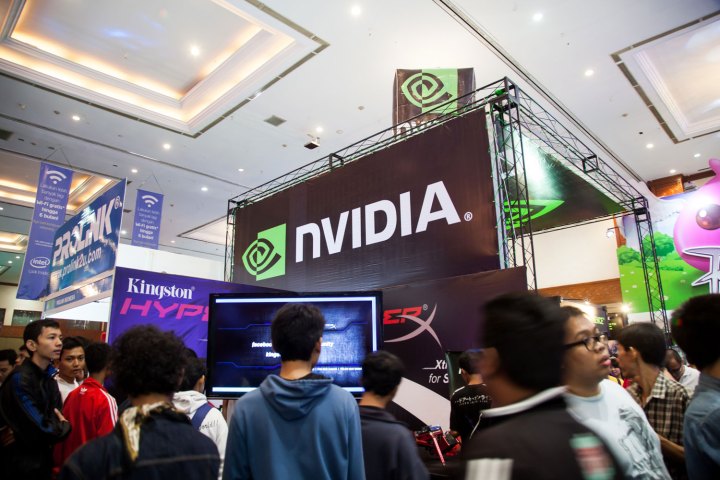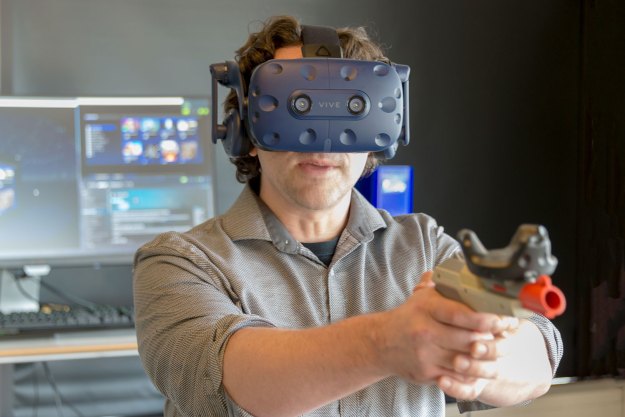
First up, Nvidia has announced the upcoming Maxwell 2-based Nvidia Quadro M5500 professional-grade graphics chip that’s packed with 2,048 CUDA cores. Built for VR Ready professional mobile workstations, this chip is based on the GM204 GPU and includes a boost clock of around 1,140MHz, 8GB of VRAM, a memory bus width of 256 bits, a memory clock of 6.6GHz (GDDR5), and a thermal envelope of 150W.
The first laptop to use this new Quadro M5500 is the MSI WT72, which is deemed to be the very first Nvidia VR Ready professional laptop. The company’s website shows it to be “coming soon,” and it will reportedly sport a 17.3-inch screen, an Intel Mobile Xeon CPU, and will weigh 8.4 pounds. The older Xeon-based WT72 listed here shows an Intel Xeon E3-1505 processor, up to 64GB of DDR4 memory, optional dual PCIe SSDs in RAID 0, a USB 3.1 Type-C port, and Windows 10 Professional, just to give you an idea.
In Monday’s blog, Nvidia says that it is currently working with Dell, HP, Lenovo, and other top OEMs to create workstations that are Nvidia VR Ready. These workstation solutions include the Z240, Z640, and Z840 from HP, the Precision T5810, T7810, and T7910 from Dell, and the P500, P710, and P900 from Lenovo. All of these will have “Nvidia recommended” minimum requirements to run the HTC Vive, Oculus Rift, and other high-definition VR headsets.
According to a slide provided by Nvidia, the HP-based VR Ready workstations listed above will have a recommended spec that includes two Quadro M6000 24GB graphics cards in SLI at the very least. For the listed Dell Precision workstations, Nvidia suggests a single Quadro M6000 24GB card while the three workstations from Lenovo will need at least the Nvidia Quadro M6000 graphics card to run the HTC Vive and Oculus Rift optimally. Solutions from BOXX, PNY, and others should run a Nvidia Quadro M5000 graphics card.
“Quadro professional GPUs power Nvidia professional VR Ready systems,” Nvidia says in a blog. “These systems put our VRWorks software development kit at the fingertips of VR headset and application developers. VRWorks offers exclusive tools and technologies — including Context Priority, Multi-res Shading, Warp & Blend, Synchronization, GPU Affinity, and GPU Direct — so pro developers can create great VR experiences.”
Nvidia’s new Quadro chip will join the company’s current line of mobile GPUs for 17.3” professional platforms including the Quadro M5000M, the Quadro M4000M, and the Quadro M3000M. The new chip is certainly the beefiest of the set, as the Quadro M5000M — while also based on the “Maxwell 2” GM204 GPU and second on the list — has only 1,536 CUDA cores and a boost clock of around 1,050MHz. All three older chips are not VR Ready compliant, Nvidia shows.
Nvidia will reportedly ship the Quadro M5500 graphics card in May. So far the company hasn’t released any pricing, but the chip can be found here among a list of GPUs for workstations. You’ll see that it’s developed for the “Skylake” generation of Intel processors.
Editors' Recommendations
- This new VR headset beats the Vision Pro in one key way and is half the price
- Disney just reinvented the VR treadmill, and it looks amazing
- The Apple Vision Pro has given VR its iPhone moment
- Apple’s secret VR headset just leaked an ingenious idea
- This microLED advancement is exactly what AR and VR needs



